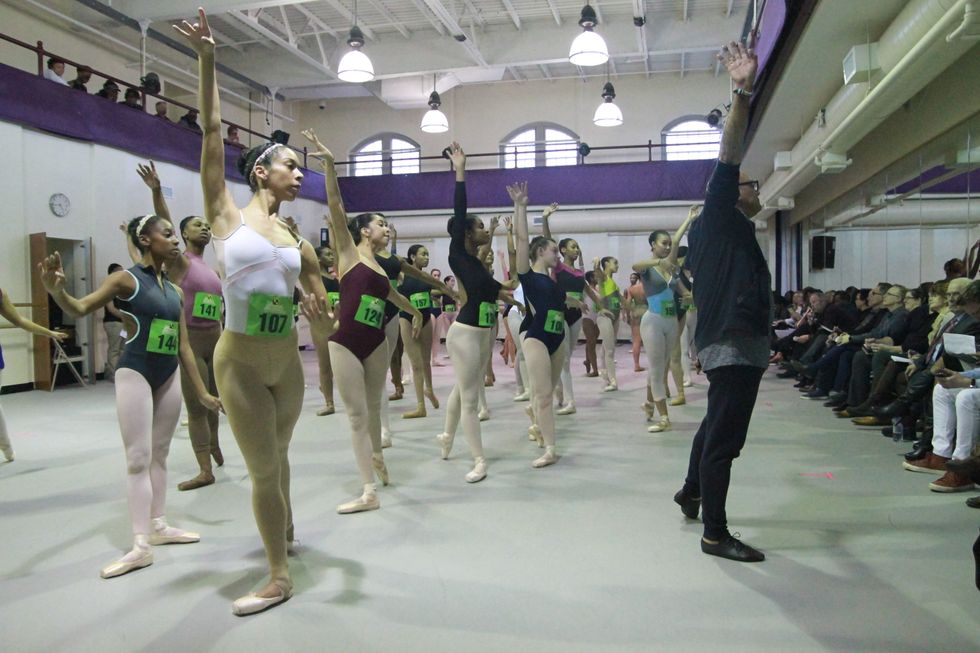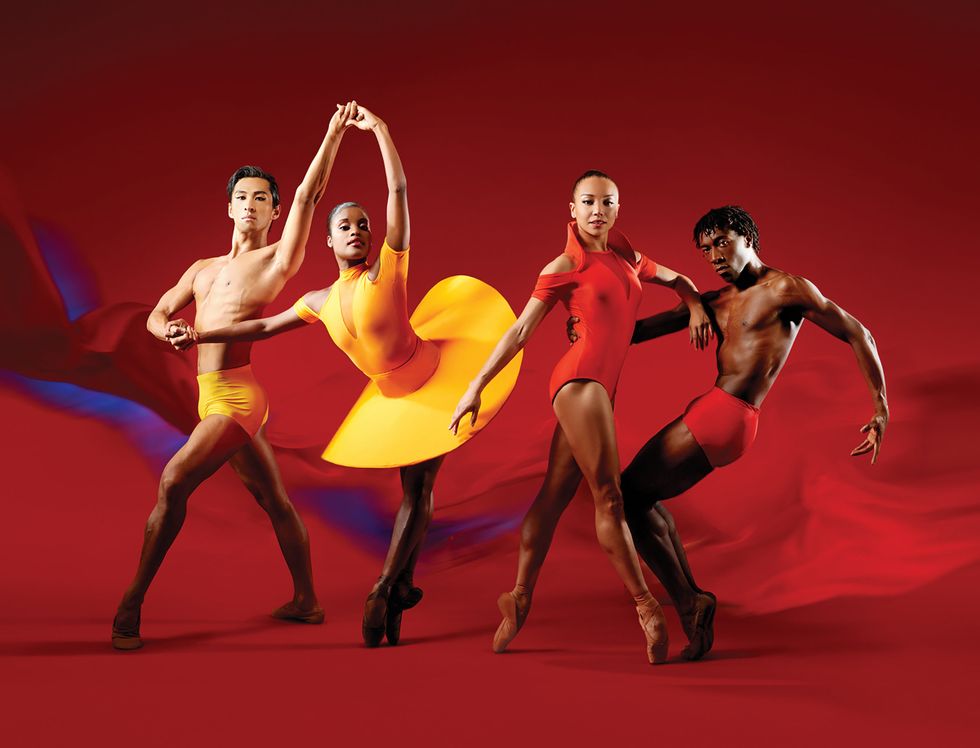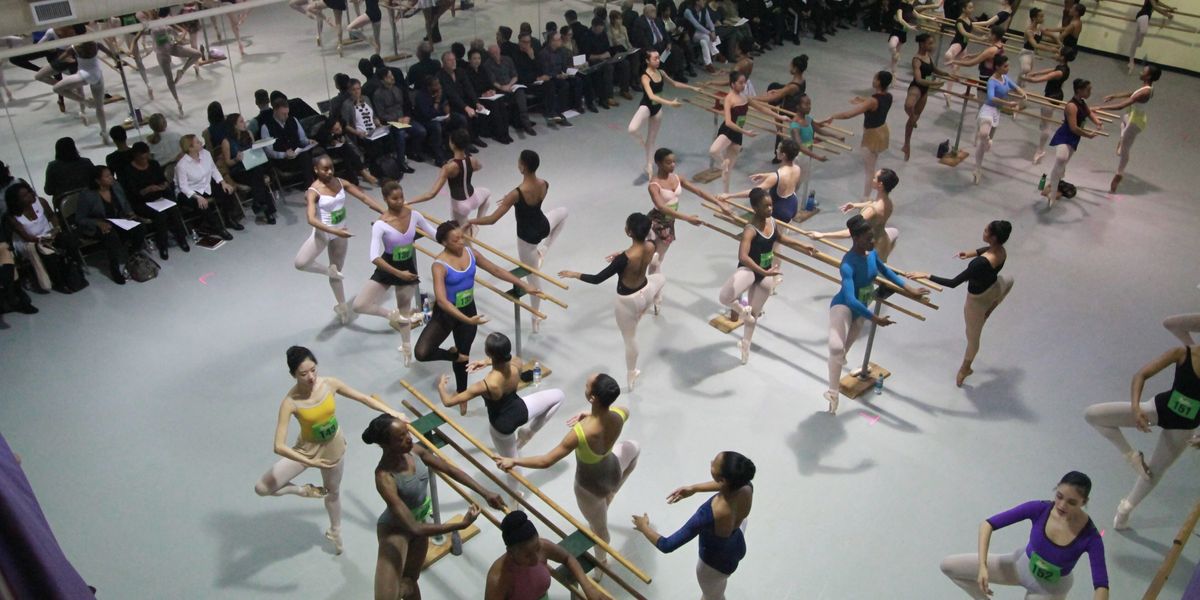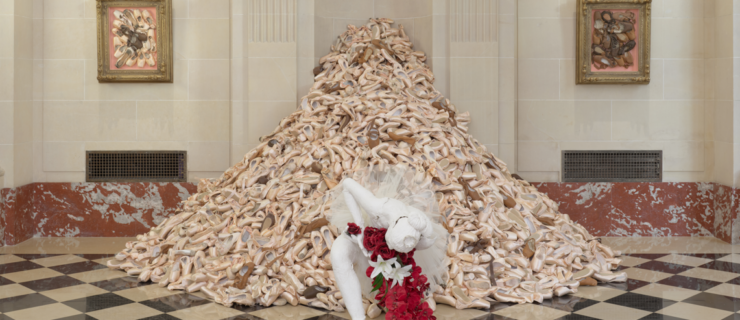Why IABD, DTH and Dance/USA Teamed Up for The Equity Project
A newly launched initiative hopes to change the face of ballet, both onstage and behind the scenes. Called “The Equity Project: Increasing the Presence of Blacks in Ballet,” the three-year initiative, funded by the Andrew W. Mellon Foundation, is a partnership between Dance Theatre of Harlem, the International Association of Blacks in Dance and Dance/USA.
“We’ve seen huge amounts of change in the years since 1969, when Dance Theatre of Harlem was founded,” says Virginia Johnson, artistic director of DTH. “But change is happening much too slowly, and it will continue to be too slow until we come to a little bit more of an awareness of what the underlying issues are and what needs to be done to address them.”
 IABD’s annual audition for ballet dancers of color. Photo by E. Mesiyah McGinnis, Courtesy IABD
IABD’s annual audition for ballet dancers of color. Photo by E. Mesiyah McGinnis, Courtesy IABD
The 21 organizations who have committed to the project, which include some of the largest U.S. ballet companies, such as New York City Ballet, American Ballet Theatre and San Francisco Ballet, first met in June 2018 at Dance/USA’s annual conference. They will meet again at the IABD Conference and Festival in Dayton, Ohio, this month, and for a third time in 2020 at DTH in New York City. In between those meetings, each institution will work with a team of consultants to address its specific challenges.
IABD president and CEO Denise Saunders Thompson says The Equity Project is a way to directly address many of the issues that have been raised at events like IABD’s annual audition for ballet dancers of color, and roundtables hosted by both IABD and DTH. “It extends the conversation into some actionable items now for the ballet community,” such as increasing hiring and community outreach programs, she says. “I think a lot of the companies feel like they’re doing diversity or equity inclusion work in a good way but aren’t really tackling the root of the issue, which is that the people they go to for assistance with addressing diversity issues and filling positions look the same as they do.”
 Dance Theatre of Harlem. Photo by Rachel Neville, Courtesy Lincoln Center Out of Doors
Dance Theatre of Harlem. Photo by Rachel Neville, Courtesy Lincoln Center Out of Doors
Another key action item the project will address is to look at diversity beyond the stage. “We know we’ve got the dancers,” Thompson says. “But we also know there are people who can fill roles throughout these companies, from the boardroom to the office staff to production staff and designers. It’s about really looking at a full organization in its totality.”
Dance/USA executive director Amy Fitterer says the project also reflects another important lesson the three sponsoring organizations have learned over the years: “You can really only go so far if you don’t have the top people involved,” she says. “But now you’ve got executive and artistic directors saying ‘I want to talk about this,’ and that’s crucial.”
“People have really responded to this in a warm and positive way,” Fitterer adds. “It’s something that’s really been building from the work we’ve all been doing. It’s all coming together now at a time when the companies and directors are ready.”




